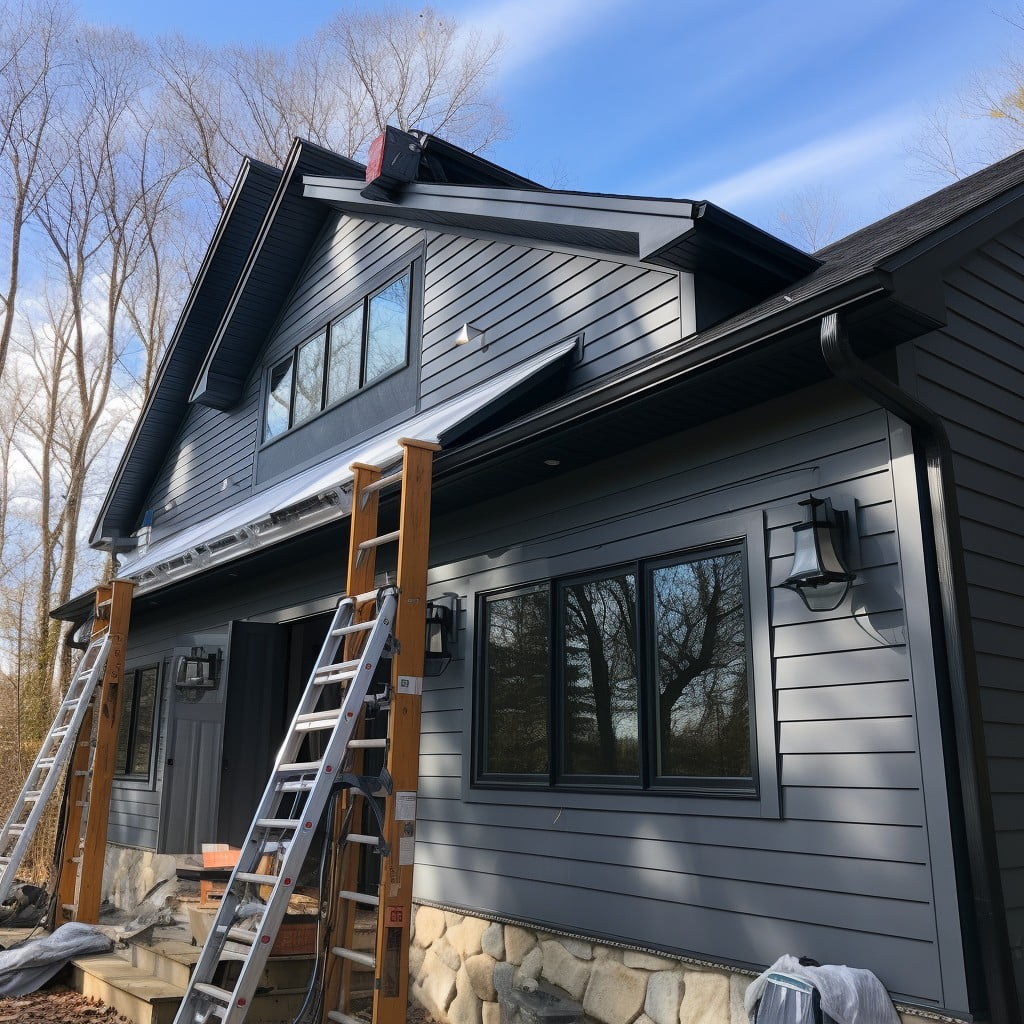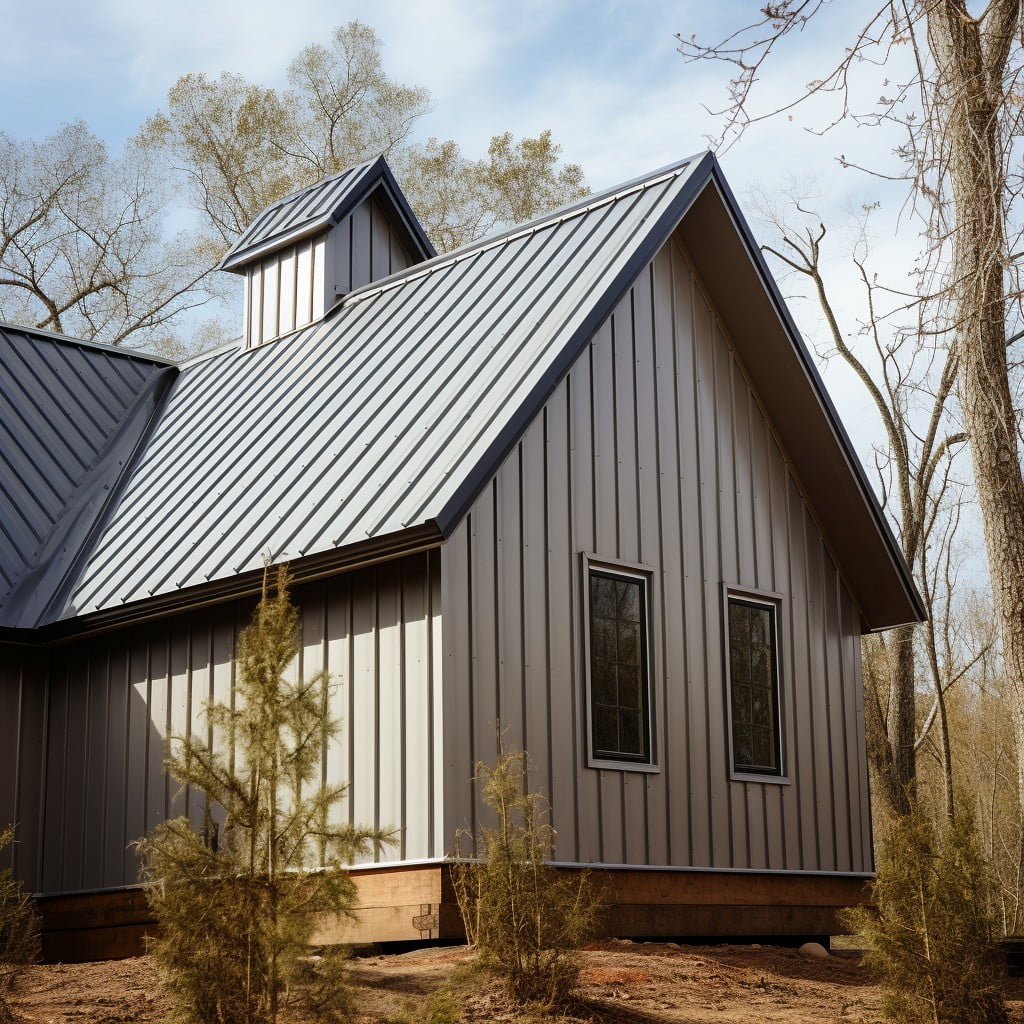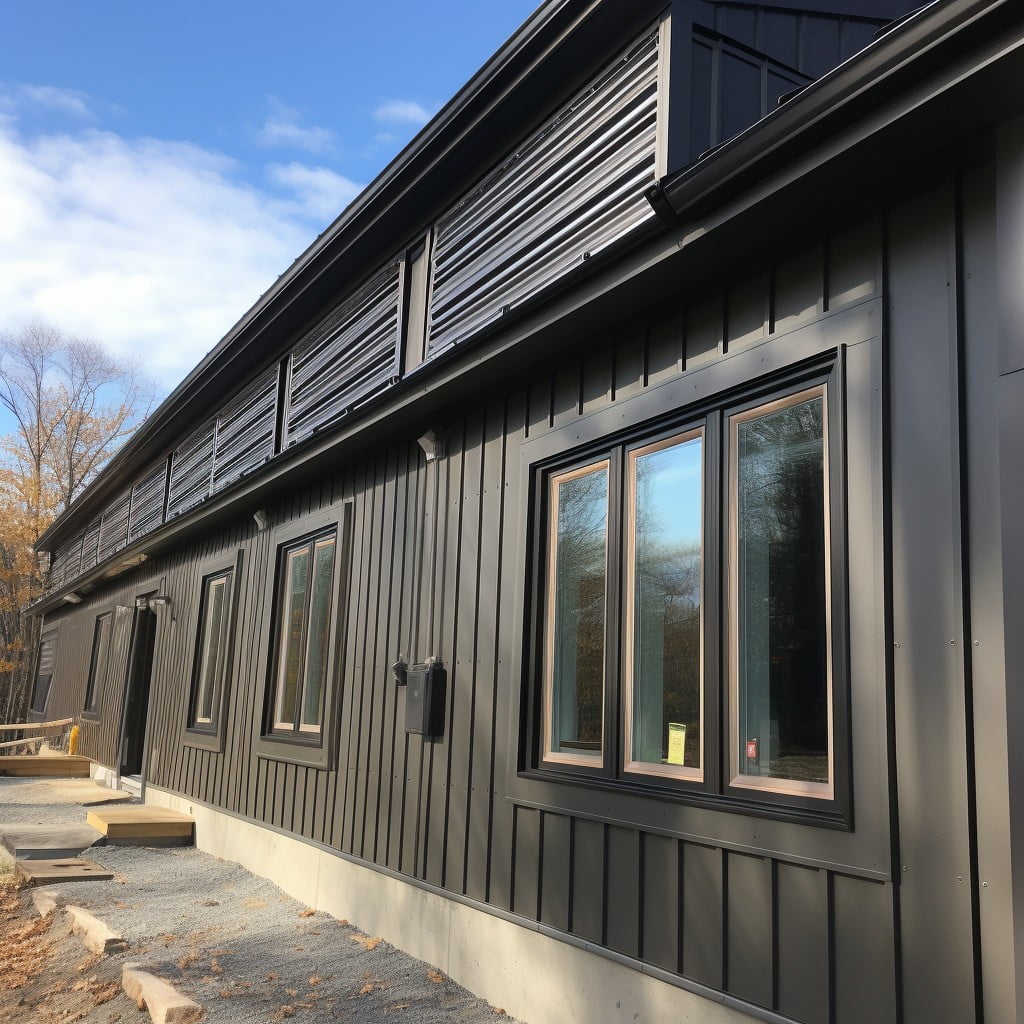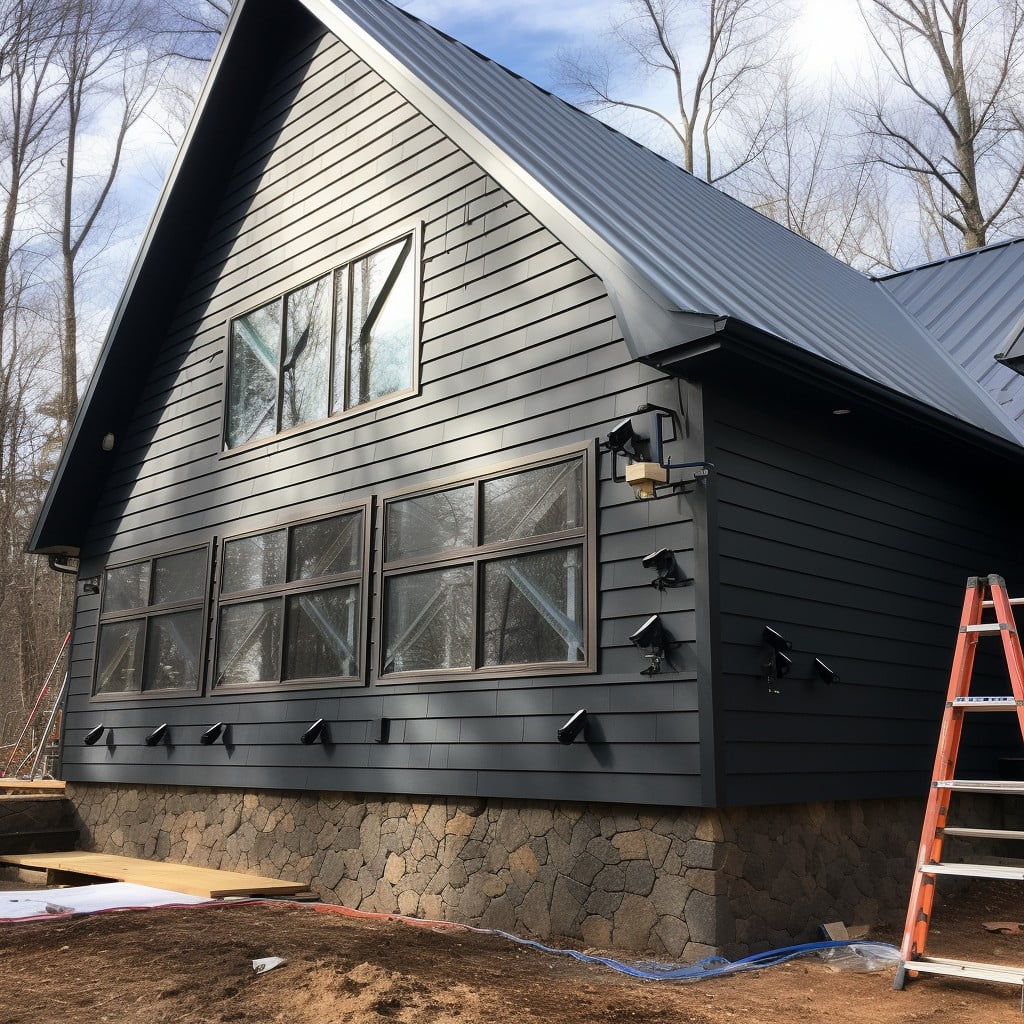In this article, we delve into the step-by-step process of installing a gable vent in a metal building, enhancing ventilation and controlling temperature effectively.
Installing a gable vent in a metal building is a straightforward process that can significantly improve ventilation and prevent moisture-related issues.
This article will guide you through each step, from selecting the right vent and tools to properly sealing the installation for weather resistance.
We’ll delve into the intricacies of cutting through metal siding, positioning the vent accurately, and ensuring a secure fit.
Whether you’re a seasoned DIY enthusiast or a beginner, you’ll find this guide comprehensive and easy to follow.
So, let’s dive into the specifics and learn how to install a gable vent in a metal building effectively.
Key takeaways:
- Gable vents enhance ventilation and prevent moisture-related issues.
- Optimal placement and size of gable vents are crucial for efficiency.
- Assess the need for soffit venting before installing gable vents.
- Proper installation includes cutting the opening, securing the vent, and adding flashing.
- Consider the interaction between gable and soffit vents for effective ventilation.
Understanding Gable Vents

Gable vents play a pivotal role in creating effective cross ventilation in a metal building. Set within the gable end of a building, these vents allow hot, stale air to exit, helping to regulate temperature and humidity levels.
Remember, the right placement vastly influences vent efficiency. Vents too low might offer limited airflow, while those positioned too high could lead to a partial heat trap. Opt for designs supporting both inflow and outflow of air for a well-ventilated, comfortable indoor environment.
Furthermore, the size of the gable vent matters, with larger options allowing for better air circulation. Be mindful of the building’s aesthetics too; a variety of shapes and styles are available to complement your metal building’s exterior.
Comparing Gable Vents and Ridge Vents

Both gable and ridge vents have their unique advantages when regulating the temperature and humidity levels of a metal building.
Gable vents, positioned on the building’s gable ends, allow for efficient air circulation, especially when combined with soffit vents.
This combination can create a natural airflow, with the cooler air entering through the soffit vents and the warmer air escaping through the gable vents.
On the other hand, ridge vents are installed along the roof’s peak, creating an outlet for hot air.
They are often praised for providing a uniform flow of air along the entire underside of the roof, which can be a plus in uniformly maintaining temperature and preventing moisture build-up.
The choice between the two hinges on several factors, such as the building’s design, the local climate, and whether the metal building is already equipped with soffit vents.
Some buildings benefit from a combination of the two, maximizing the ventilation potential.
Assessing Need for Soffit Venting in Gable Vent Installation

When planning any gable vent project, ascertaining the need for soffit venting is essential. The primary function of gable vents is to facilitate proper airflow in buildings. To achieve this, the air must flow in from soffit vents located near the eaves and out through the gable vents.
Firstly, inspect your metal building to determine whether it has soffits. If yes, assess the size and number of the vents, if any, located therein. Properly sized and effectively distributed soffit vents ensure adequate intake of air critical for efficient airflow.
Secondly, analyze geographical and environmental conditions. In areas with common snowfalls, the choice of soffit vents needs particular consideration. Incorrect venting may result in snow ingress, leading to damages.
Thirdly, consider the building design. Buildings with vaulted ceilings may not have adequate space for soffit vents. On the other hand, flat-ceiling buildings can accommodate soffit venting more comfortably.
Finally, evaluate the attic size. The size and number of soffit vents required would increase proportionately with a larger attic. Calculation of this requirement is typically based on venting proportions set by building codes.
In absence of appropriate soffit venting, an alternative solution may be required to ensure the effectiveness of the gable vents.
Proper Placement of Gable Vents

To optimize the efficiency of gable vents, their correct placement is crucial.
The optimal location is near the peak of the gable end. This allows hot air, which naturally rises, to exit the building more easily. Architectural style and local building codes can often influence gable vent positioning as well, so it’s essential to review these factors.
An efficient venting system requires an adequate amount of opening for air to move. The calculation for the size of the opening is 1 square foot of opening for every 300 square feet of attic floor space if the attic has a vapor barrier. If not, the ratio should be 1:150.
Lastly, avoid placing vents near areas of potential water penetration, such as roof edges, to avoid moisture damage. Always ensure proper flashing and sealing during installation to guard against potential leaks.
Gable Vent Installation for Metal Buildings
The installation process begins with identifying the ideal location for the gable vent. This is typically in the upper third of an end wall where the heat naturally rises. The opening for the vent should be cut to match the size provided by the manufacturer. A template can be a great tool to get the right size without errors.
The vent is then placed into the cutout from the exterior side, ensuring that the louvres point downwards to keep out weather elements. Fasteners are used to secure the vent in place. Depending on the chosen product, sealing around the edges with a high-quality exterior sealant may be necessary to prevent water leaks.
Next, flashing is added around the vent. In metal buildings, a customized trim piece can be used to provide a tight weather seal. The trim should be installed in a way where it doesn’t interfere with the opening and closing of the louvres.
Ventilation from the gable vent is highly dependant on the wind. Therefore, it is recommended to install another vent on the opposite gable end to increase airflow efficiency. By allowing the wind to pass through from one end to the other, a natural air exchange cycle can be established.
It’s essential to install the vent in a manner that does not obstruct the structure’s integrity or violate any building codes. In-depth knowledge and careful installation are necessary to ensure the gable vent complements the metal building while maintaining its thermal efficiency and structural balance.
Interference of Gable Vents With Soffit Vents
As ventilation plays a pivotal role in a metal building’s lifespan and interior climate control, it’s essential to consider the dynamic between gable and soffit vents. First, although both aid in airflow, they can counteract each other when installed in close proximity. Specifically, instead of drawing air from the soffits, the gable vent can circulate air horizontally, disrupting the intended vertical airflow from soffit to ridge. This can result in over-ventilation in select areas, leading to moisture buildup and potential damage over time.
Next, when gable vents are installed without considering soffit vents, it may lack sufficient intake or exhaust, leading to ineffective ventilation. Therefore, while planning your ventilation approach, consider the number, placement, and type of soffit vents you wish to use. Remember to check your local building codes as they usually provide guidance on appropriate ventilation strategies.
Lastly, bear in mind that the effectiveness of gable vents can be hampered by wind direction. In a scenario where wind blows against gable vents, instead of aiding exhaust, it may push air into the building, which can affect the flow from the soffit vents. The inclusion of a wind-blocking mechanism within your design could help alleviate this issue.
Benefits of Using Gable Vents
Gable vents provide an assortment of advantages for metal buildings. Firstly, they promote proper air circulation, discouraging the accumulation of humidity and potentially harmful substances like mold. This efficient ventilation system aids in achieving balanced temperatures within the building, reducing reliance on heating or cooling appliances and, as a result, lowering energy consumption and costs.
Secondly, during sweltering summer months or frigid winters, temperature regulation is vital – gable vents can help deflect direct sunlight and reduce the heat absorbed by the metal. In winter, the vents support dispelling excess moisture that could freeze and damage the structure.
Finally, beyond functionality, gable vents add an aesthetic appeal to your metal building. They come in a variety of designs and colors, giving you the freedom to choose one that complements your architectural style. This blend of practicality and aesthetics makes gable vents a valuable addition to metal buildings.
Considerations for Installing a Gable Vent in a Pole Barn
Prior to installation, understand that the positioning is pivotal. Maintaining a proper turnover of air would necessitate placing the vent at the highest point on the gable end. This leverages the propensity of hot air to rise, optimizing the effect of the vent.
Then comes the deliberation over size. Bigger does not always translate to better when it comes to gable vents. Too large of a vent can potentially make your metal pole barn vulnerable to weather elements while too small would be unable to provide adequate ventilation. Aim for a balance to ensure efficient ventilation without compromising the structure’s integrity.
Also, be mindful of the possibility of dealing with drafts. Strategically install gable vents for a pole barn such that they are perpendicular to prevailing winds. This strategy significantly minimizes the draft within the barn, making for a more controlled environment.
Lastly, remember to account for potential obstructions. Things like electrical wiring, support beams or plumbing mustn’t be in the way of your planned venting installation. Always inspect the intended area thoroughly before making any cuts into your metal building.
Maintaining Gable Vents Throughout the Year
Consistent maintenance of gable vents is vital to ensure optimum ventilation and energy efficiency. Over the year, debris can accumulate in these vents — such as leaves, dust, or even bird nests — obstructing the airflow and reducing their efficiency.
Firstly, make it a habit to conduct quarterly checks. This allows for timely removal of any debris, as well as early detection of rust, tears, or holes that may develop in the metalwork.
Secondly, ensure proper weather-sealing. Throughout the year, extreme weather can cause wear and tear on gable vent seals, making them susceptible to leaks. Reapply caulk or weather stripping as needed.
Lastly, consider adding a mesh screen if not already present. It prevents pests from entering while allowing free air flow. Make sure it remains in good condition, replacing it as necessary.
By incorporating these simple tasks into your regular building maintenance, your gable vents will continue to function efficiently season after season.
FAQ
What is the best way to ventilate a metal building?
The optimal method for ventilating a metal building involves installing operable windows at both the upper and lower levels, letting fresh air in through the lower windows while allowing warm, humid air to escape through the upper ones.
Should I vent my metal building?
Yes, venting your metal building is essential as it assists in controlling condensation, regulating temperatures, and preserving air quality.
How do you vent a metal shed?
To vent a metal shed, one can keep the windows or the door open or install screened vents at each gable end of the roof thereby eliminating heat and moisture accumulation while facilitating fresh air circulation.
How do you keep a metal building from sweating?
To prevent a metal building from sweating, one can invest in DripStop panels, ensure proper ventilation, or use a dehumidifier.
What types of vents are suitable for a metal building?
Ridge vents, louvers, circular vents, and gable vents are suitable options for venting in metal buildings.
How can one calculate the proper ventilation needs for a specific metal structure?
To calculate the proper ventilation needs for a specific metal structure, calculate the cubic volume of the building and aim for a minimum airflow rate of 1 CFM (Cubic Feet per Minute) per square foot of floor area.
What can be the potential issues if a metal building is not properly ventilated?
Improper ventilation in a metal building can lead to condensation build-up, material degradation, and a significant decrease in indoor air quality.
Recap




